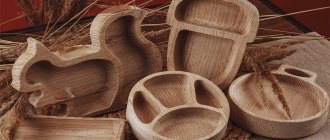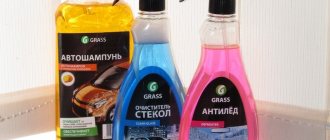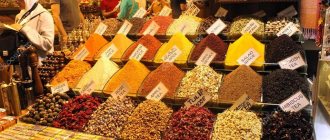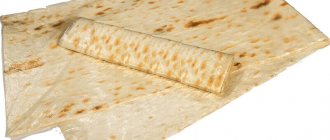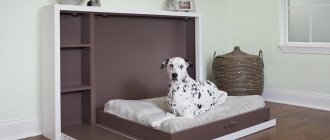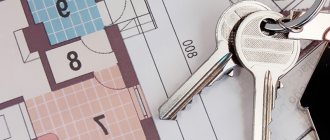Production of granulated feed
Special equipment is used for the production, storage, and transportation of mixed feed.
Now it is quite accessible. Therefore, farms and enterprises involved in breeding pigs, cows, sheep, rabbits, fish and birds prefer to purchase their own lines. What vitamin and mineral supplements can be made and what equipment is used for this?
Equipment
The type of equipment is determined by the amount available to the entrepreneur and the scale of planned production. The basic set includes:
- Granulator – 24000
- Crusher – 16800
- Dryer – 33000
- Chopper – 30000
- Mixer – 80000
- Libra – 30000
Buying equipment separately is inconvenient and not profitable.
Therefore, many people prefer to purchase a ready-made production line:
- LPK - makes loose feed, per hour from 0.5 tons, costs from 500 thousand rubles;
- LPKG-1 – for the production of feed pellets from 500 kg per hour – from 4.2 million rubles;
- LPKG-3 - allows you to produce 2.8 tons per hour - from 6 million rubles;
- Mini - line with low performance indicators costing from 150 thousand rubles.
Feed production - what are the benefits?
Compound feed is a product without which the activities of farms and agricultural enterprises are unthinkable. Typically, the cost of purchasing feed accounts for about 70 percent of the total amount spent on keeping animals and birds. To improve the profitability of an agricultural enterprise, many owners prefer to produce their own feed. The mixture is quite simple to make, but due to high humidity it will not retain its properties and qualities. For this purpose, special equipment is used, which allows reducing the moisture level of feed to 9-12 percent. In this form, the product lasts for a long time.
Total cost of business
To start a production line, you will need an initial investment:
- Registration and permitting documents – 100 thousand rubles.
- Equipment – 1420 thousand rubles.
- Delivery and installation – 350 thousand rubles.
- Purchase of raw materials – 300 thousand rubles.
- Rent – 100 thousand rubles.
- Other expenses - 50 thousand rubles.
The total amount is 2,320,000 rubles.
Subsequently, monthly expenses include:
- rent – 100 thousand rubles.
- utilities - 20 thousand rubles.
- salary – 128 thousand rubles.
- raw materials - from 300 thousand rubles.
- taxes - 40 thousand rubles.
- additional expenses - 20 thousand rubles.
Total: 608,000 rubles are spent per month.
Production of granulated feed - stages
There are many recipes according to which food is made. This depends on the end result desired and the type of animal for which the product is intended. For poultry and pigs, for example, barley is processed. Well, you don’t have to do this for other animals. Granulated food has many advantages over crumbled food. It undergoes heat treatment and disinfection, so it is easier to store. The manufacturing process consists of the following stages:
– Grain grinding.
– Preparation of the required proportions.
– Stirring the components of the composition.
– Granulation of the prepared mass.
– Product cooling.
– Packaging.
Food for cats and dogs
But all the above information will be useful to you only if you plan to organize the production of feed for the needs of the agricultural sector. Are there any relatively affordable home business technologies that involve setting up the production of food for cats and dogs? After all, the cost of the same canned pet food is very high!
Alas, in this case everything is somewhat more complicated. To begin with, to produce this type of food you will need to buy meat and offal. You understand that their cost will be much higher than the price of the same hay or grain that is used in the production of animal feed.
Let's consider what exactly is required to start the production of dry food for cats and dogs.
Feed mixture - types
The following types of feed exist:
– Universal complete food. The product is balanced and does not contain additional additives. Used for daily feeding.
– Concentrate. It is an additive to the main feed. Contains a high concentration of vitamin D2, mineral salts, which accelerate the growth of young birds and increase the weight of adult birds and livestock.
– Feed mixture. The composition includes grain production waste.
– Balancing additive. Used as an addition to the main feed, it contains proteins, vitamins and mineral salts.
– Premix. A product made from bran and chalk. It also contains antibiotics, enzymes, vitamins and minerals.
There are many pet products from well-known brands on the market. Therefore, it is not easy to interest buyers. Can:
- offer affiliate programs to pet stores.
- sponsor events and animal exhibitions.
- organize cooperation with informal communities of cat and dog lovers not so much for sales as for disseminating information about the product.
- publish information about products in the regional media.
- distribute leaflets in public places.
Differences between a mini-factory and industrial technologies
The main difference between a full-scale industrial manufacturing plant and a mini-plant is the size. From here follow the manufacturing stages. At large enterprises they differ from mini-lines by two or three points. The creation of combined feeds at a conventional plant involves going through the following stages:
- Filling special bunkers with grain.
- Transfer to dryer.
- Further sending to the grain crusher, which is equipped with a dust removal system.
- Transporting raw materials to the mixer.
- Sending the mixture to the granulator and creating granules.
- Cooling of produced granular raw materials.
- Placing food in bags.
In addition to the manufacturing stages, the mini-factory moves at the request of the owner. Modern trailed, movable installations designed for the preparation of feed allow you to make it anywhere. Transportation of the mobile system is carried out using a tractor or other large equipment.
The number of personnel required to service the mini-plant does not exceed three people. The entrepreneur saves on the construction or rental of a separate premises. You can produce compound feed next to warehouses where grain raw materials are stored. This approach will provide an influx of additional profit.
Assembling a granulator: do-it-yourself options
With specialized knowledge and skills, you can assemble the granulator yourself.
Do-it-yourself household feed granulator, drawings
The design of the apparatus depends on the method of pressing the feed:
- 1st option - using special rollers;
- 2nd option - using a screw.
Rollers can be:
- mobile;
- stationary.
With stationary rollers, pressing of the crushed mass is carried out due to the rotation of the matrix itself, which is controlled by a gear transmission with intersecting axes. The movement is transmitted along the chain: drive shaft – toothed gear – ring gear – matrix.
Stages of work when independently manufacturing a granulator with fixed rollers:
- Find a rear axle gearbox from domestically produced cars, such as VAZ and Moskvich. It will be used as rollers.
- Make a body from a metal sheet or pipe of the required diameter. Attention is paid to the dimensions - the distance between the wall and the matrix should be minimal (several millimeters), but ensure its free rotation.
- Connect the matrix with a gear transmission with intersecting axes (the matrix and the ring are on the transmission shaft, the gear is on the drive shaft perpendicular to it). The gear train is assembled from automobile parts. The matrix is installed perpendicular to the rollers, its diameter must match the width of the rollers.
- Attach the rollers to the body. The gap between them and the matrix is adjusted using special bolts.
- Connect the gearbox to the cylinder (body) using a coupling and bearings.
- Make a square hole in the lower part of the body, to which attach a special container for collecting granules.
- If the body is assembled from two parts, weld the ears. Using bolts through the lugs, fasten the parts together.
- The electric motor can be taken from old household appliances: a vacuum cleaner, a washing machine. Motors with a power of 3-4 kW are suitable.
Be sure to read:
How to make an incubator with your own hands: with automatic and manual turning, types, description
If it is not possible to make a gear train to connect the matrix and the electric motor, you can use a belt moving on pulleys.
This option has its advantage - when the matrix jams, the belt will begin to slip. The belt drive can be taken from old domestic sewing machines.
The reliability and performance of the entire structure depends on the quality of the incoming components.
Converting a meat grinder into a granulator
Granulator from a meat grinder
It is not difficult to make a device based on a meat grinder, you should:
- Attach the flywheel to the auger; it will allow you to process solid parts of the feed.
- Swap the mesh (matrix) and the knife.
The granulating device from a meat grinder has several disadvantages:
- does not process high-hardness feed;
- does not form granules, but only crumbles feed.
Such a device can be powered by an electric motor or by a hand crank.
Device with a homemade matrix
Device with a homemade matrix
Experienced craftsmen can assemble a device from a homemade matrix. The most easily manufactured flat part.
Assembly order:
- Purchase a blank (metal disk) with a thickness of at least 20 mm.
- Measure the cross-sectional size of the drive shaft.
- Drill a hole of the same diameter as the shaft cross-section in the center of the disk, cut a groove for a rigid fit on the shaft.
- Using a special cutter, cut a sufficient number (depending on the size of the matrix) of cone-shaped holes with a diameter of no more than 8-10 mm.
The walls of the holes in the matrix must be tapered; this ensures pressing and removal of pellets. The diameter of the matrix determines the performance of the device.
But the larger its dimensions, the more powerful the electric motor will be required. For example, a granulator with a matrix with a diameter of 0.5 m is capable of producing about 300 kg of granules per hour, but it will require a 25 kW motor to operate it.
When assembling yourself, you need to pay attention to two points:
- the width of the rollers must correspond to the diameter of the matrix;
- the shaft with rollers should be located perpendicular to the working surface of the matrix.
Screw press
Through a special loading device, the raw materials enter the screw press and move along the housing, while it:
- shrinks;
- plasticized;
- homogenized.
Be sure to read:
Harvesting haylage in rolls in film: step-by-step instructions
The screw press allows you to significantly optimize production:
- increases the productivity and quality of mechanical feed processing;
- facilitates the granulation of plastic materials, such as peat;
- carries out briquetting of fine-grained and bulk substances.
In a complex processing line, a screw press pumps out the crushed mass, and the matrix performs forming functions.

